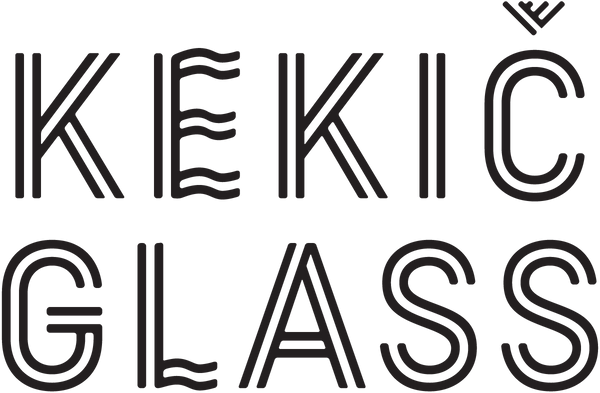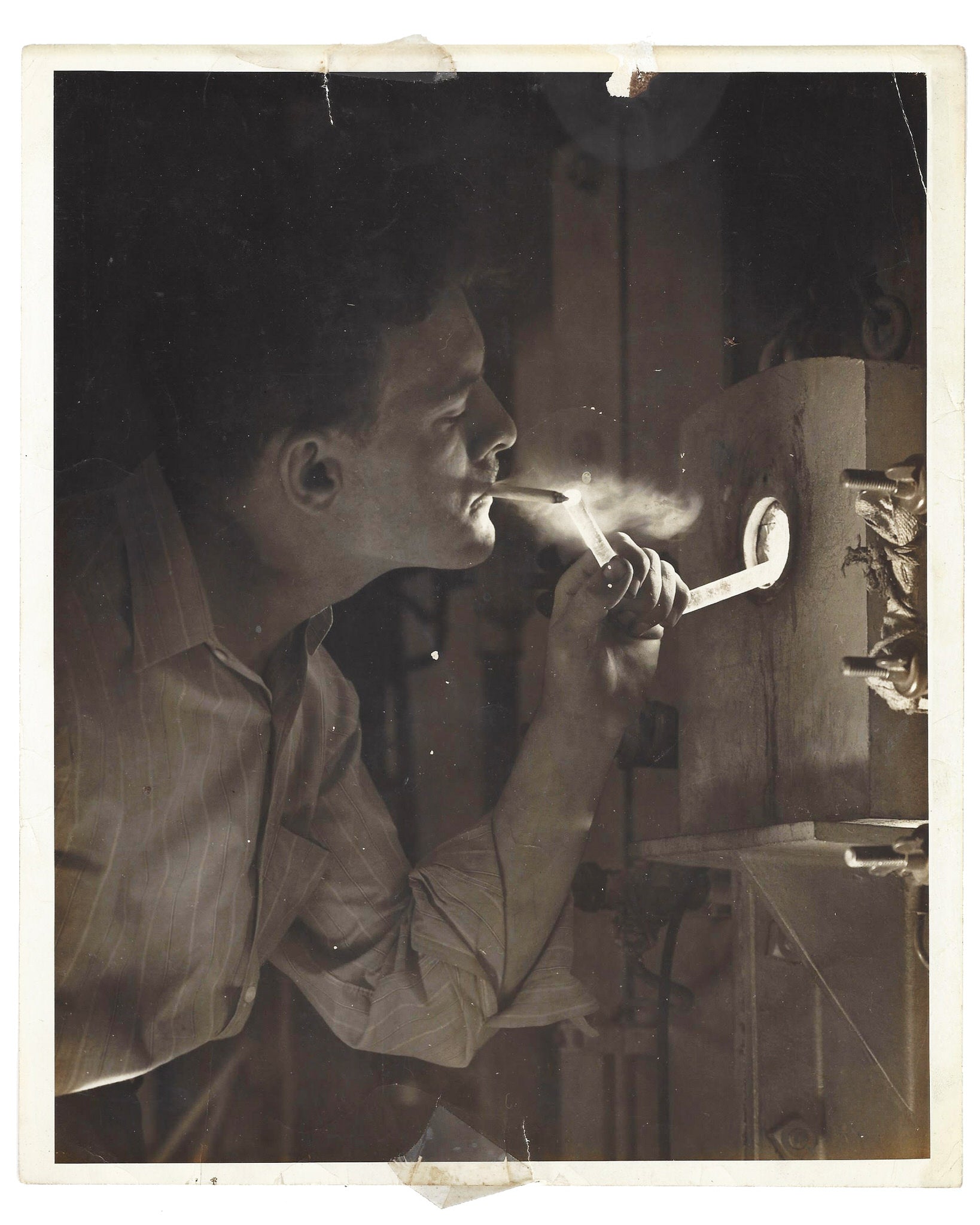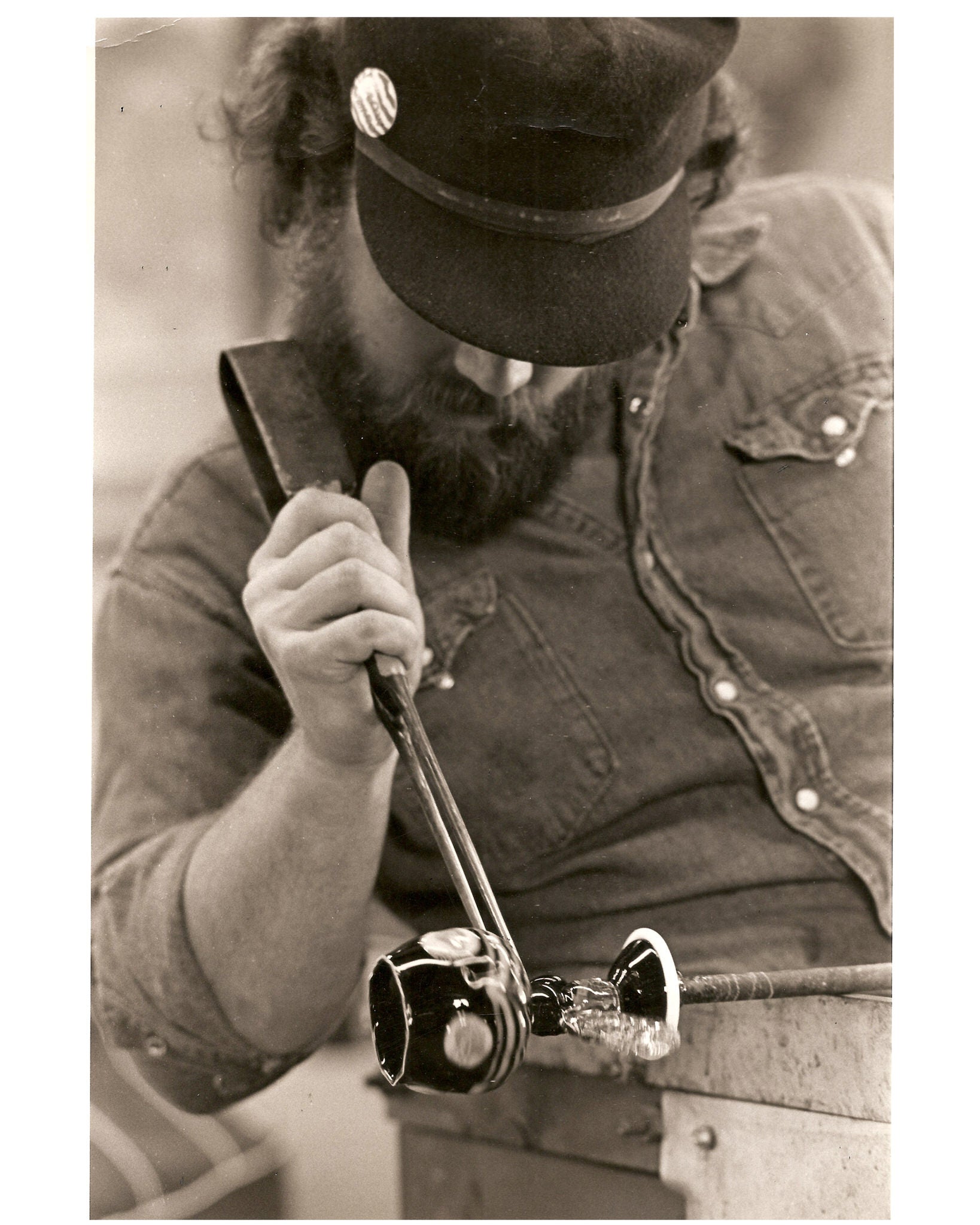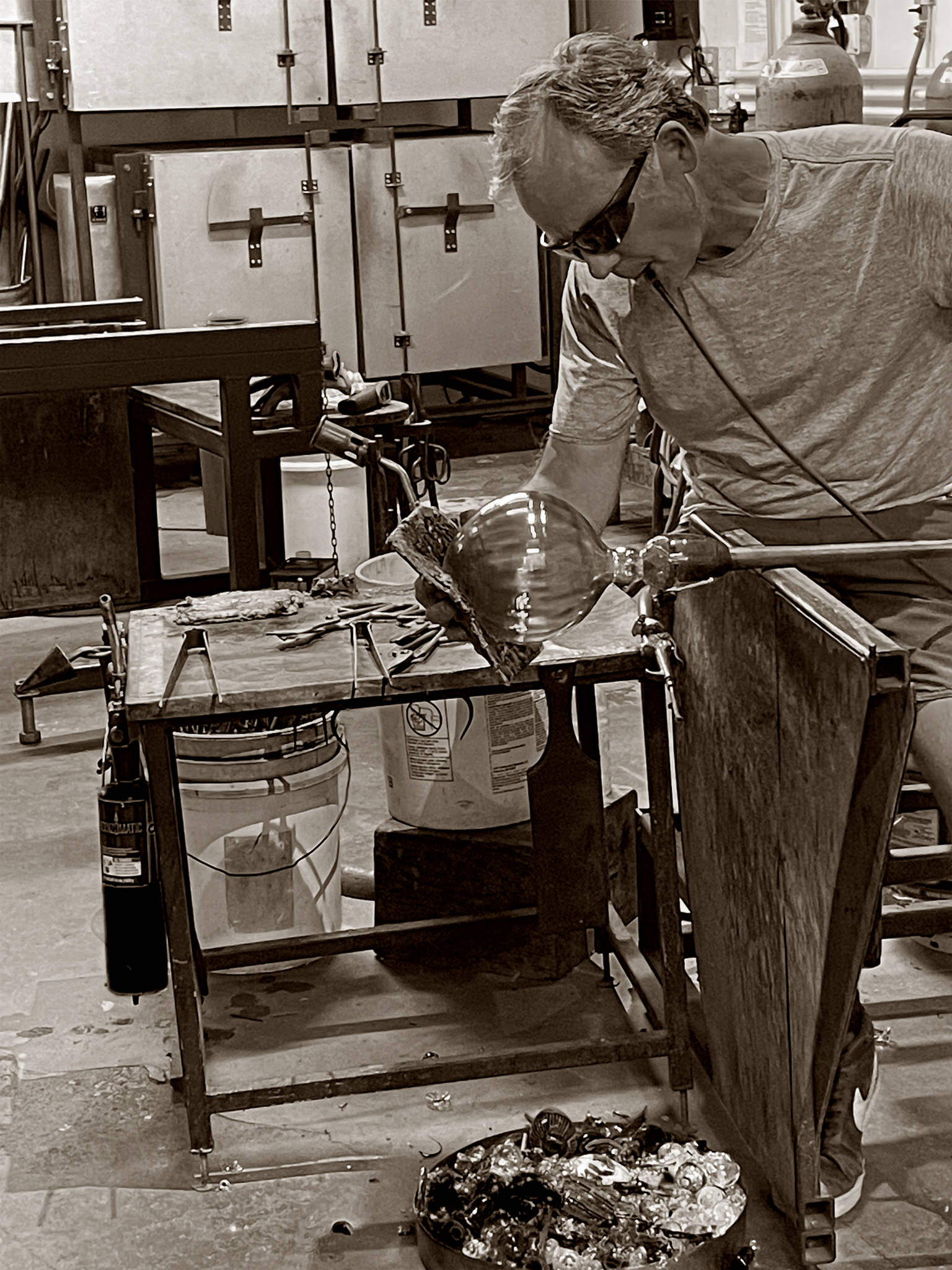A new name for a new beginning
Many of you know that after my studio fire, I moved my glass production and business to Bellows Falls, Vermont. This time has been one for rebuilding and re-invention, a time for reflection and reassessment.
It’s been a great decision to move and a way of turning a terrible event into a positive chance for renewal, creating new opportunities for sustainability and creative development. But in all this change, I’ve come to realize that I’'ve outgrown the name Tsuga Studios. I realize my move and the evolution of my glass would not be complete without identifying a new name.
I wanted the word Glass in the title. I also wanted to honor my family heritage in glassmaking while celebrating the green energy source from which I now create my glass art.
Third-Generation Glassman
I’m often asked how one starts out on the path to becoming a glassblower; I was lucky enough to be born into a glass-making family. My grandfather worked as an industrial glassworker at General Electric in Cleveland, Ohio for forty-two years. His experience and technical knowledge helped my father, Thomas Kekic, build the first glass studio and program for the Rochester Institute of Technology in New York. I could honestly say that glass is in my blood.
Growing up during the early studio art glass movement in America, I was surrounded by hand-made objects and people who worked hard at developing their craft using raw, natural materials and great effort to bring their creative ideas to life.
After my father passed away in 1984, I had all but forgotten his glassmaking. It was when I was coming of age at nineteen years old that I fully realized my legacy while attending a beginning glassblowing class at Penland School of Crafts in North Carolina, where my father had been some twenty years before. For me, Penland came to be a place for discovering my own creative resources and passion. It was there that I developed a new relationship with glass, one where I rediscovered the value of finely crafted things that were made by hand. They are valuable not only as useful and beautiful objects, but important for the satisfaction one gets in making them.
Molten, Malleable, Magic
Glass is a fascinating, compelling, and challenging material with which to work. As a substance used for artistic expression, its only limitations are those that we create for ourselves. I believe there’s a way to do it in glass; one needs only to find the way.
Glass working techniques have evolved for thousands of years. I’ve benefited from those early traditions, borrowing many old world techniques to help me realize my own vision. Using these techniques, glassblowing for me has become a process of taking a super hot liquid and freezing it to room temperature in a controlled--and sometimes precarious--balancing act of heat, gravity, timing and human intervention.
I find glass is most beautiful when I can capture and express its fluidity as a material while revealing its unique relationship with color and light. I design my work to be decorative and often functional, using clean, strong lines in form and color. I’ve often felt most satisfied as an artist and designer when making things that are both beautiful and useful.
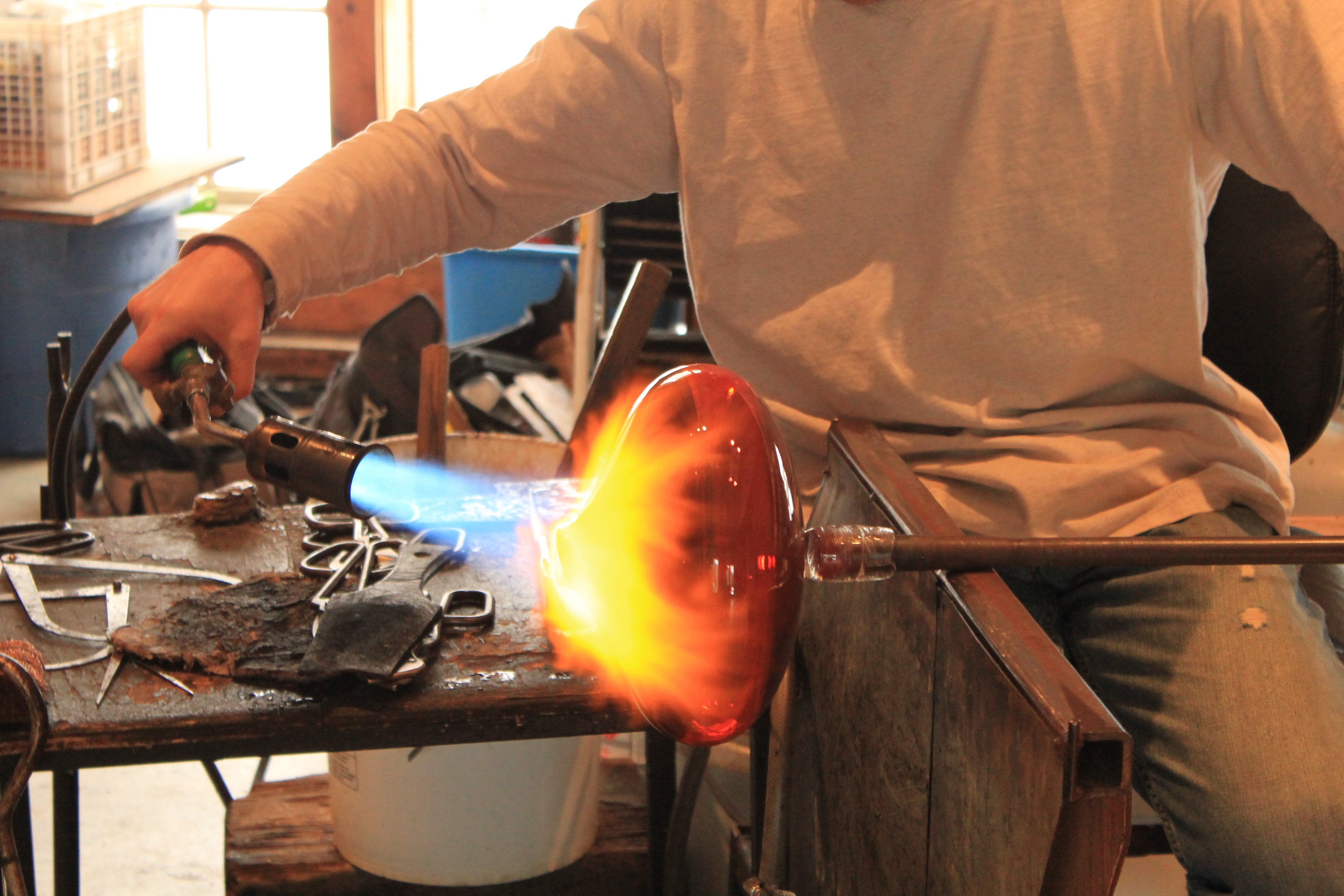
Rising Out of the Ashes
My wife Tamasin and I built the Tsuga Studios hot shop in 2000 on land in Chester, Vermont that had been in Tamasin’s family for generations. We harvested and milled Tsuga Canadensis trees, the scientific name for the Eastern Hemlock, for the lumber to use in our new building. We built a home and creative spaces for exploring and developing new techniques and design ideas while working to market and promote our work.
Everything changed in 2017: on September 13th, the flue gases from the glass furnace ignited framing and timbers in the Glass Studio wall. Thankfully I discovered the fire quickly and with the help of local volunteers, I was able to control the fire before the building was totally lost. Most thankfully no one was hurt, but the studio suffered major damage and the glassworks needed to be shut down.
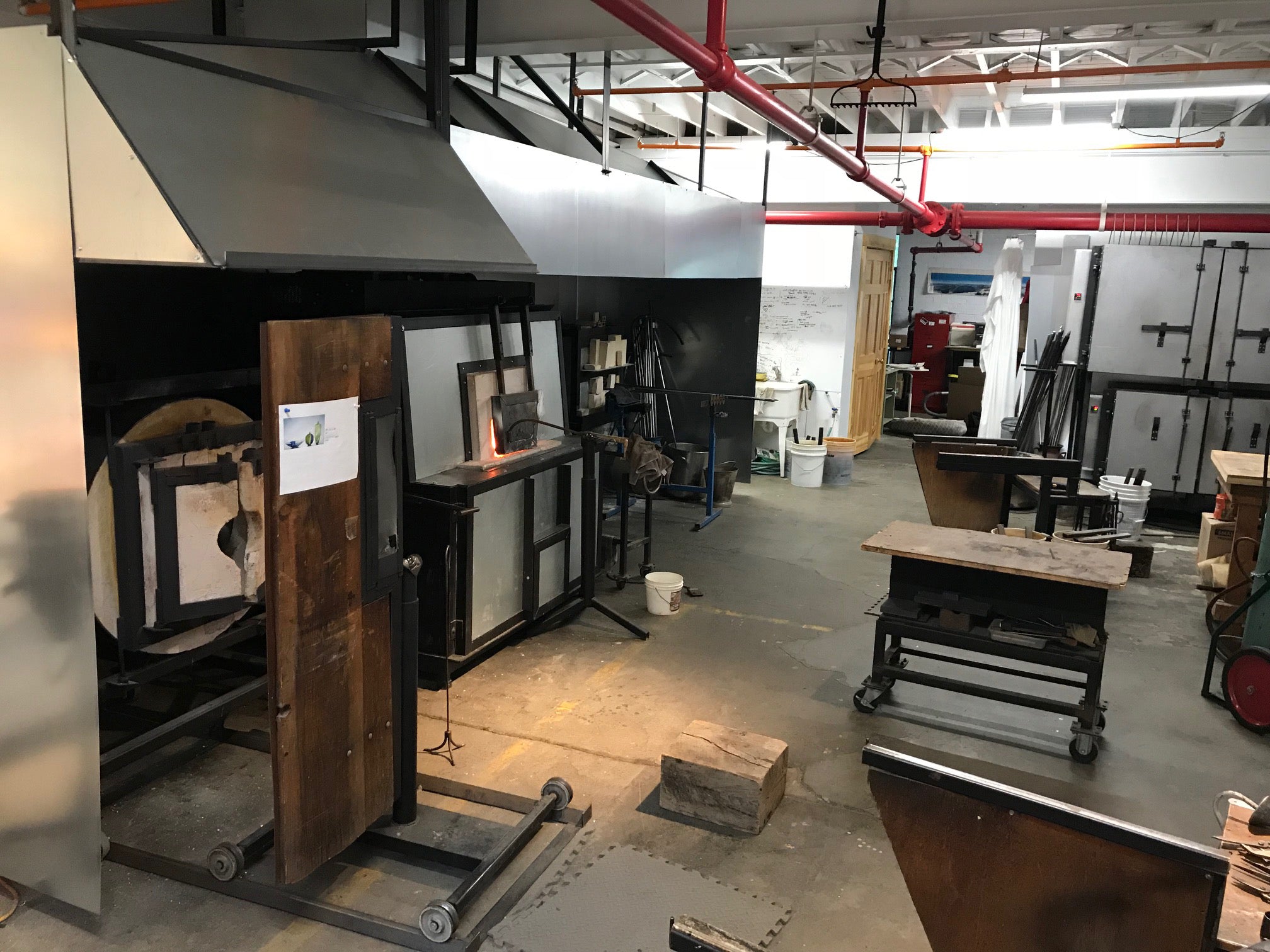

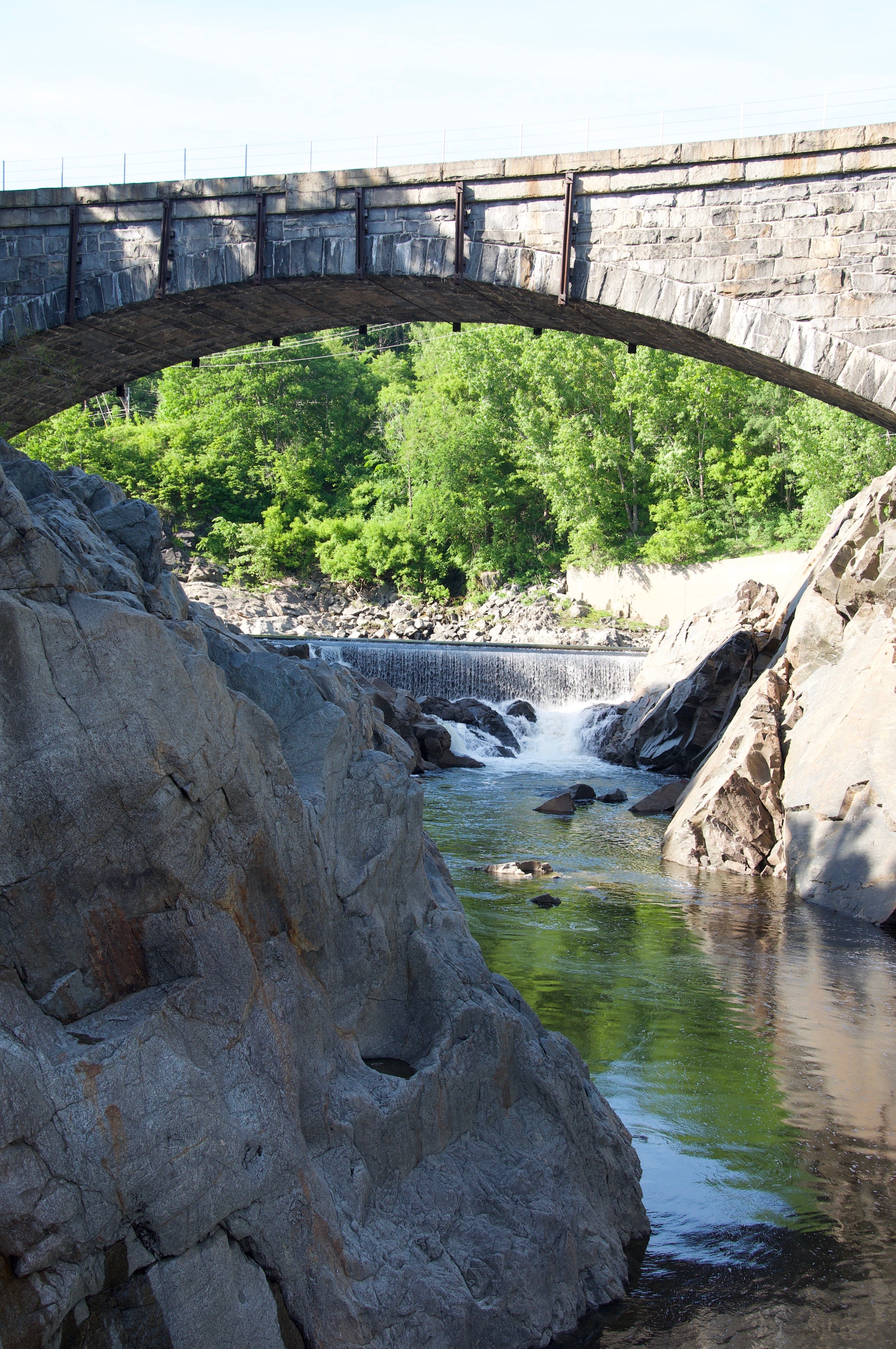
After much exploration, consideration and reconstruction, I moved my glass operation to an old paper mill that is sited on the first major canal in America in Bellows Falls, Vermont. I found a place where I could use hydroelectric power; I invested in an electric glass furnace, moved equipment and built a new studio in a groovy renovated industrial space.
I now use renewable energy from the Connecticut River to melt and cool my glasswork, shrinking my carbon footprint and reducing energy costs while continuing to make refined beautiful art glass from raw earth materials.
